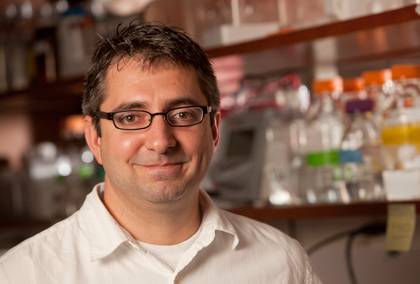
What makes people tick has always fascinated Herb
Covington. Even on his days off in middle
school he'd convince his Mom to let him ride with her to work so he could talk
with her co-workers.
"Whenever she allowed for this, I probably spent hours
listening and discussing the drama surrounding the lives of her co-workers,"
says Covington, a new assistant professor of psychology and neuroscience. "My
parents said I always enjoyed talking with people at any opportunity, and I was
consistently intrigued by what would trigger certain emotions."
The seeds of a future neuroscientist were innate; he just
didn't realize it until his teen years.
While applying to colleges during his senior year near
Richmond, Va., he met Virginia Commonwealth University graduate student Steve
Varvel.
Varvel told him about working with noted biopsychologist Joseph
Porter, who uses animal models to study the stimulus effects of drugs on
behavior and to determine the mechanisms of action of drugs.
From that point on, Covington knew what he wanted to do with
his life.
"I absolutely loved it," he says of the
experience. "Porter told me how different drugs could be associated with
distinct behaviors, and then made a connection with how the brain contributed
to that behavior. Working with Porter just solidified my desire to continue
doing this for as long as I could."
Covington and Dr. Kafui
Dzirasa, assistant professor of psychiatry and behavioral sciences at Duke,
are together researching ways to identify the neural underpinnings of, as well
as treat, stress-related maladies such as depression.
They are also applying for grants that will allow them to
expand on their work, namely on identifying the exact neural circuit mechanisms
of stress-related illnesses. "We are trying to identify what is happening
across the brain's circuitry in those individuals that are vulnerable, as well
as those that are resilient, to stress," Covington says.
Covington's research extends his postdoctoral work showing
that the prefrontal cortex is crucial for producing depression-like behaviors
following social stress.
In their labs, Covington and Dzirasa use an animal model to
simulate chronic stress in humans by placing a mouse alongside a larger mouse
for prolonged periods. After exposure to a dominant mouse -- about five minutes
a day over 10-15 days -- Covington said the smaller subordinate mice typically
show depression-like behavior, including an inability to experience pleasure, social
avoidance, impaired coping responses to other environmental stressors and
anxiety-like behaviors.
The researchers then introduce proteins into specific areas
of the brain that can be used to control the activity of neurons, using a
process called optogenetics or DREADDs (Designer Receptors Activated
Exclusively by Designed Drugs), which allows them to then control specific
activities within these cells. Unlike electrical and other forms of
stimulation, this process allows Covington and Dzirasa to remotely turn single
cells within a circuit on or off.
Similar to an fMRI, they are also able to capture cellular
events in more detail, from one area of the brain to another using electrophysiological
recording by Dzirasa.
Their findings could pave the way for a "circuit-level
understanding" of behavioral pathologies observed in depression, and
ultimately successful treatment, Covington says.
"What goes on in the brain is so complicated that a lot
of companies have decided that it's too complicated to pursue investing in newer
drug treatments," he says. "Thus, the time is critical to change that
way of thinking."